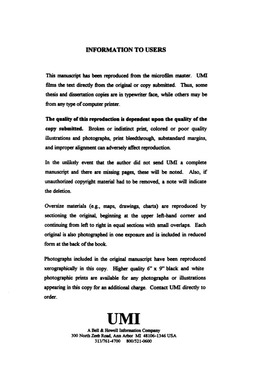| dc.contributor.advisor | Scherman, Avraham, | en_US |
| dc.contributor.author | Northam, Edward John. | en_US |
| dc.date.accessioned | 2013-08-16T12:29:51Z | |
| dc.date.available | 2013-08-16T12:29:51Z | |
| dc.date.issued | 1997 | en_US |
| dc.identifier.uri | https://hdl.handle.net/11244/5540 | |
| dc.description.abstract | The purpose of this study was to evaluate the effectiveness of one such prevention program. One hundred and eighty male students from a large midwestern university were divided into two groups (dormitory & ROTC) and were administered 3 outcome measures on attitudes across pre, post, and follow-up conditions using a Solomon four group design. In addition, due to the reactiveness to the topic of rape and the high face validity of the outcome measures, a social desirability scale was used to assess for the need for social acceptance. | en_US |
| dc.description.abstract | The 1990's saw the development of acquaintance rape prevention programs in response to increased awareness of it's occurrence and impact on individuals. Prevention programs were developed with the intent of changing the attitudes of sexually aggressive males on the assumption that attitudes such as rape support, adversarial sexual beliefs, and acceptance of rape myths contribute to acquaintance rape. | en_US |
| dc.description.abstract | Interpretation of significance indicated that respondents' baseline scores were non-supportive of rape and showed decreasing support for rape across testing periods. The goal of evaluating the effectiveness of the prevention program was not reached because of the failure to identify the target population. Results point to the need for more accurate identification of sexually aggressive males prior to presentation of intervention, using evaluation components based on multiple construct theories of attitude and behavior in the assessment of programs, and designing programs based on current theories of persuasion and attitude change. Support is also given for continued use of social desirability measures and follow-up assessment to evaluate long term program impact. | en_US |
| dc.description.abstract | No significant differences were found within the Solomon four group design nor with the measure for social desirability. Data were regrouped into a 2 x 3 (group x administration) design and significant interactions were found for 2 of the 3 outcome measures across post testing and follow-up and pretesting and follow-up conditions for the remaining measure. Significance was also found between the dormitory and ROTC group at the follow-up condition on all measures. | en_US |
| dc.format.extent | ix, 85 leaves ; | en_US |
| dc.subject | Psychology, Clinical. | en_US |
| dc.subject | Acquaintance rape United States Prevention. | en_US |
| dc.subject | Women's Studies. | en_US |
| dc.subject | Women college students Crimes against United States. | en_US |
| dc.subject | Sociology, Criminology and Penology. | en_US |
| dc.subject | Psychology, Social. | en_US |
| dc.title | The evaluation of a university-based acquaintance rape prevention program. | en_US |
| dc.type | Thesis | en_US |
| dc.thesis.degree | Ph.D. | en_US |
| dc.thesis.degreeDiscipline | Department of Educational Psychology | en_US |
| dc.note | Source: Dissertation Abstracts International, Volume: 58-09, Section: B, page: 5134. | en_US |
| dc.note | Adviser: Avraham Scherman. | en_US |
| ou.identifier | (UMI)AAI9808398 | en_US |
| ou.group | Jeannine Rainbolt College of Education::Department of Educational Psychology | |
